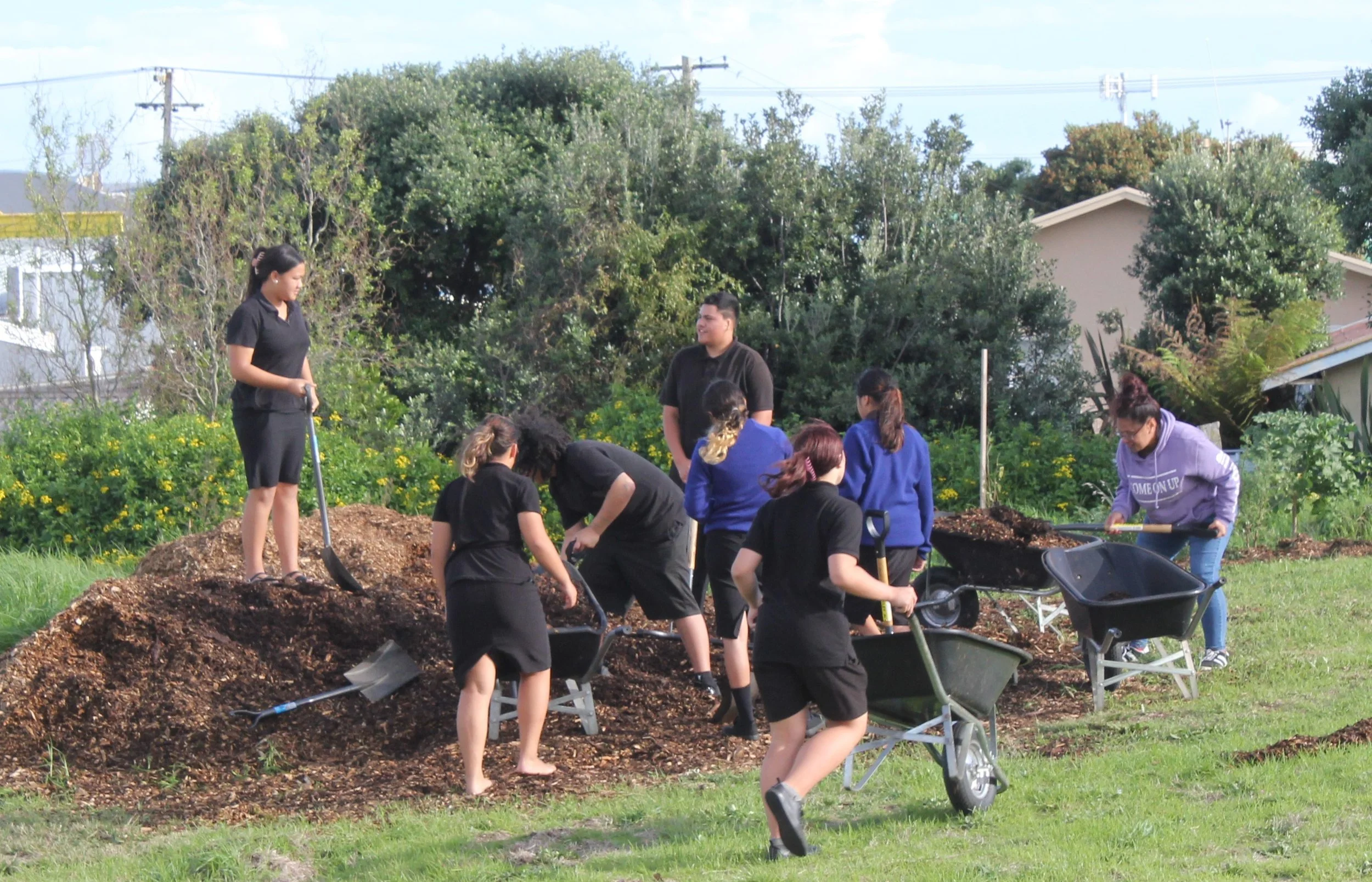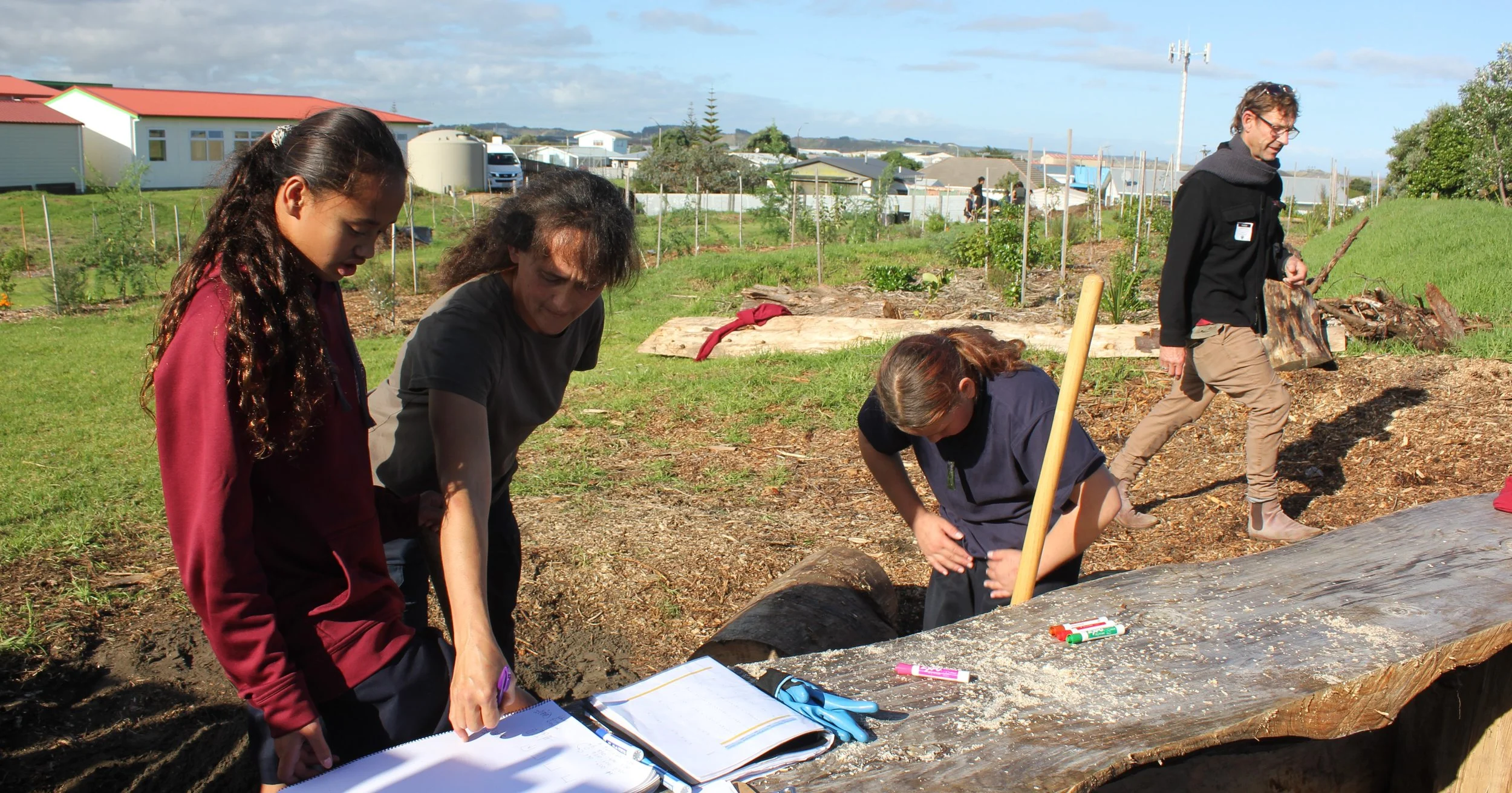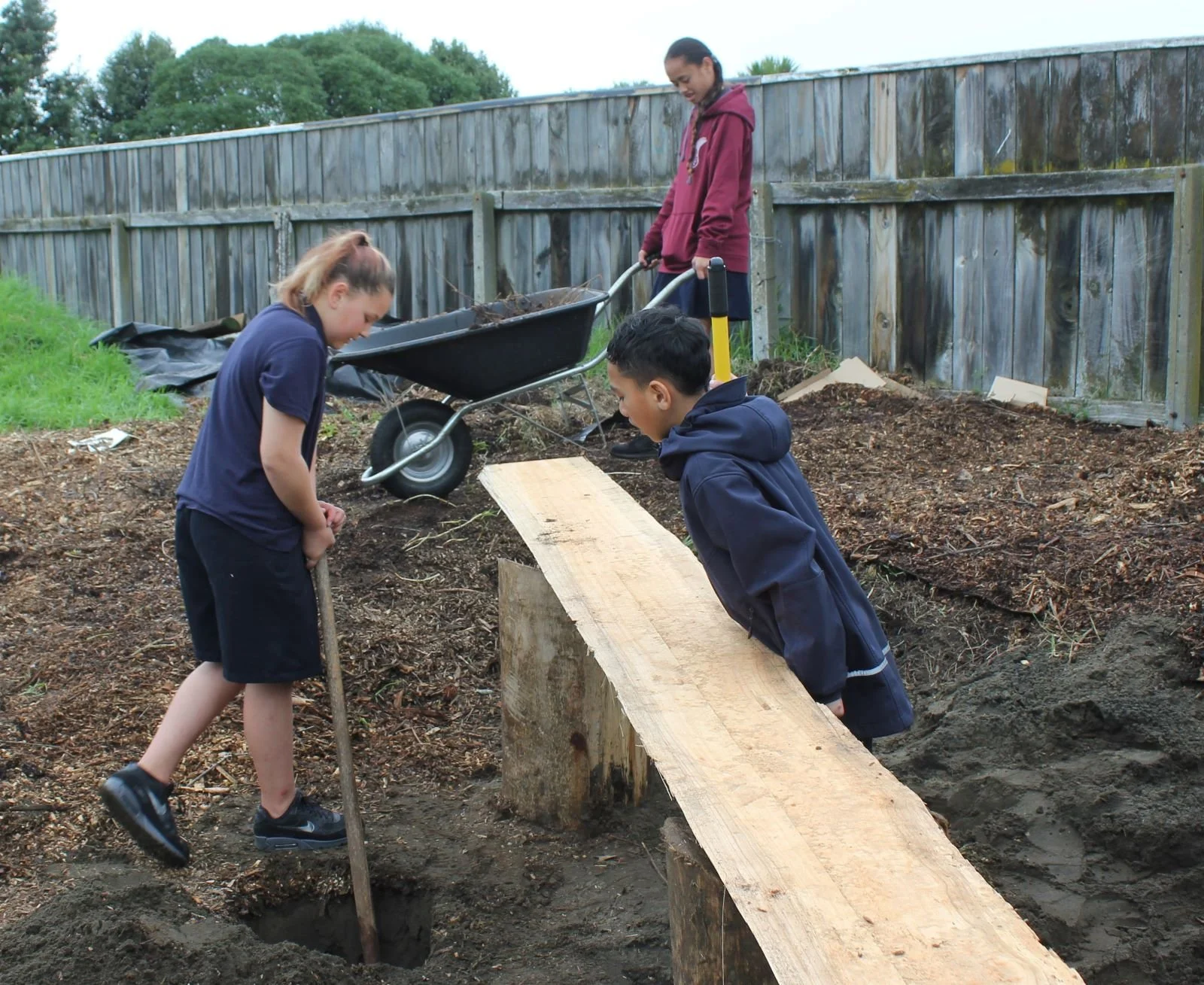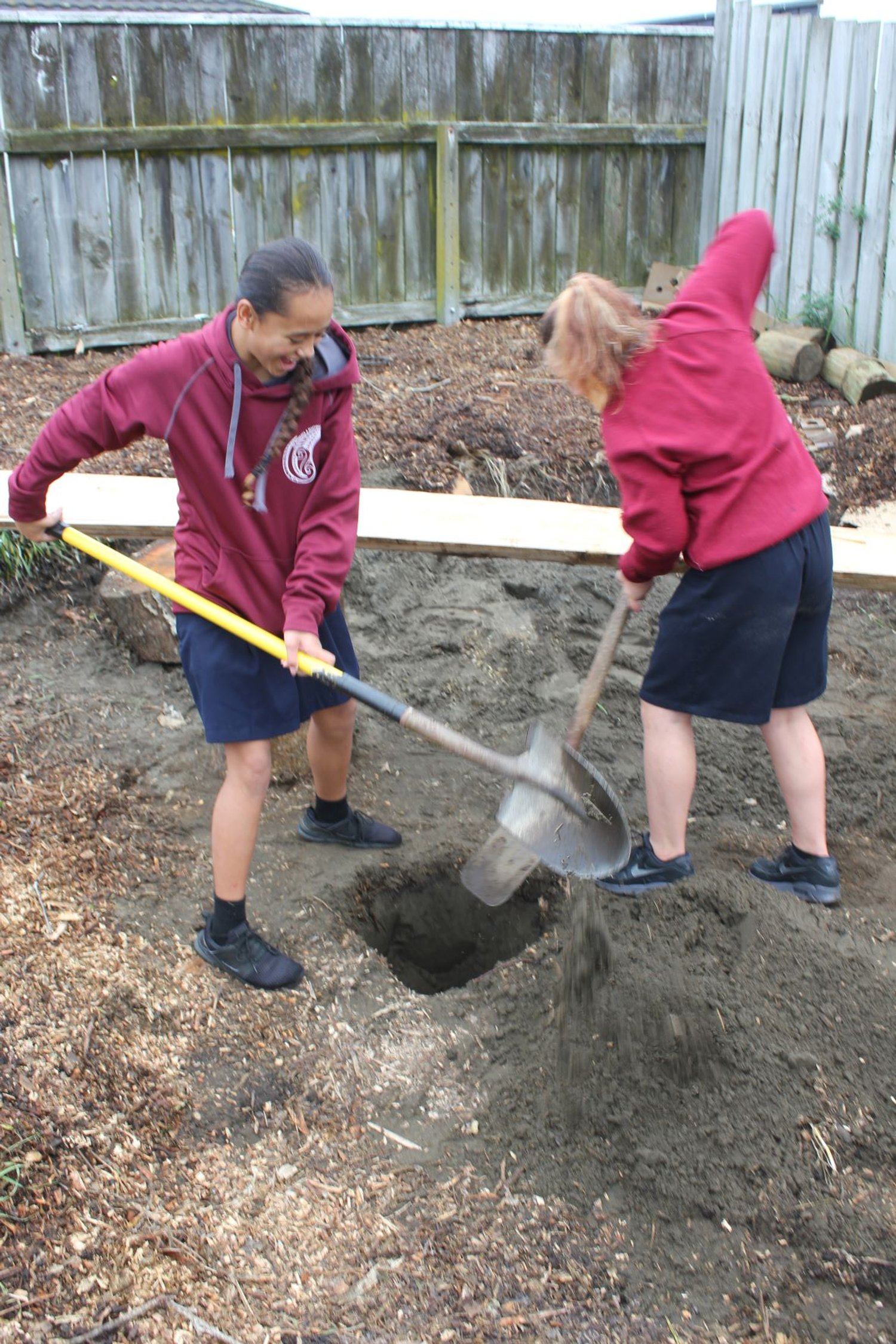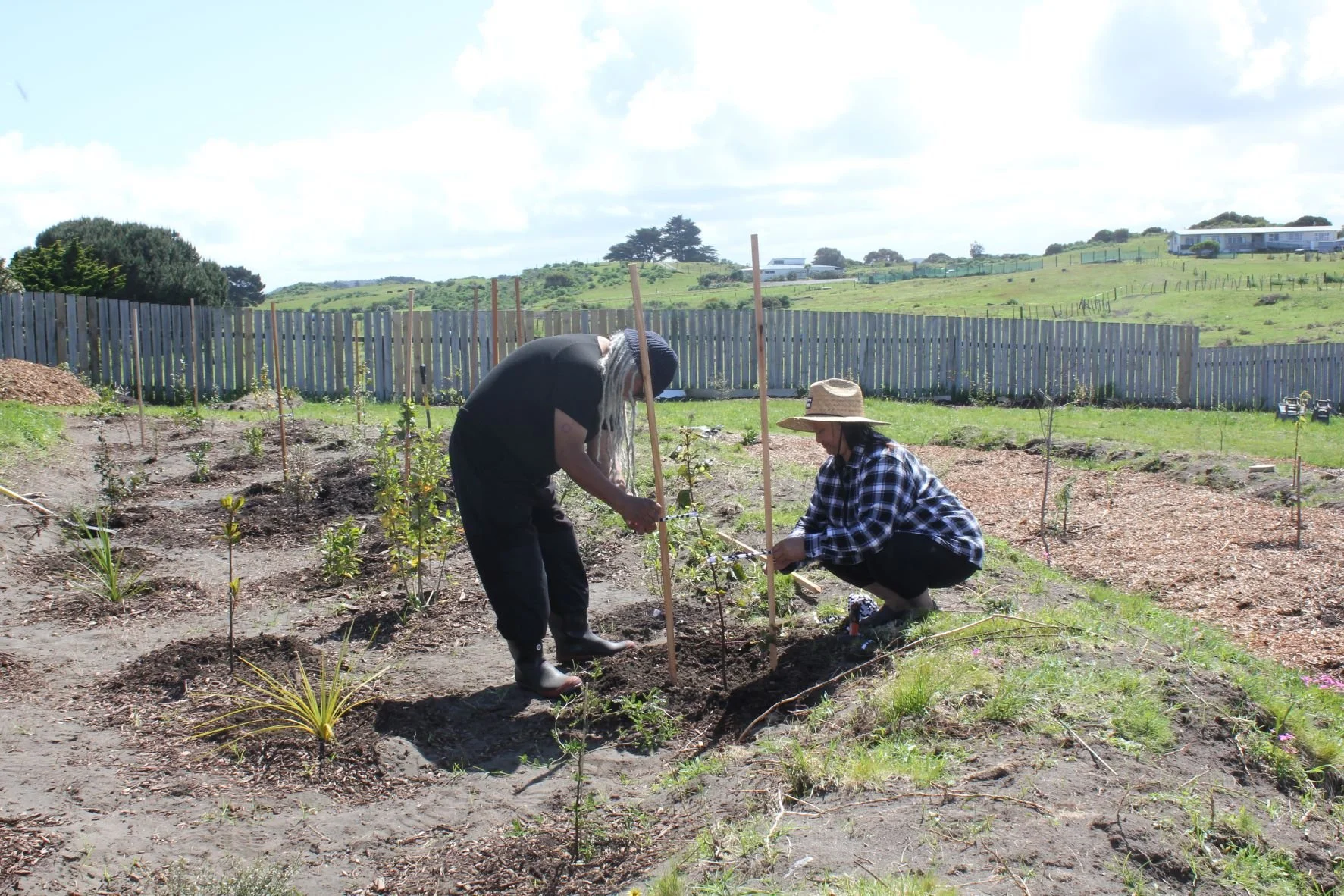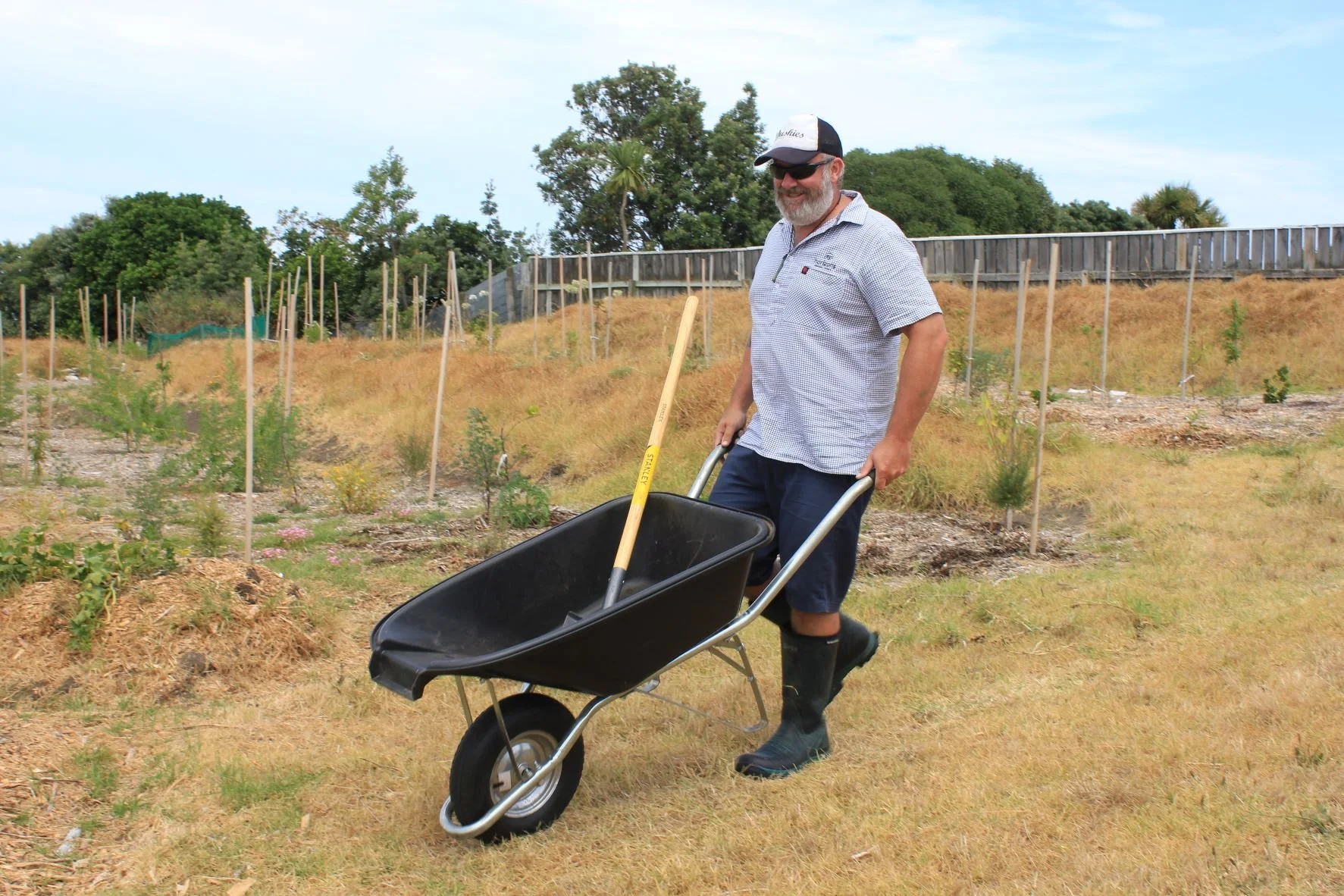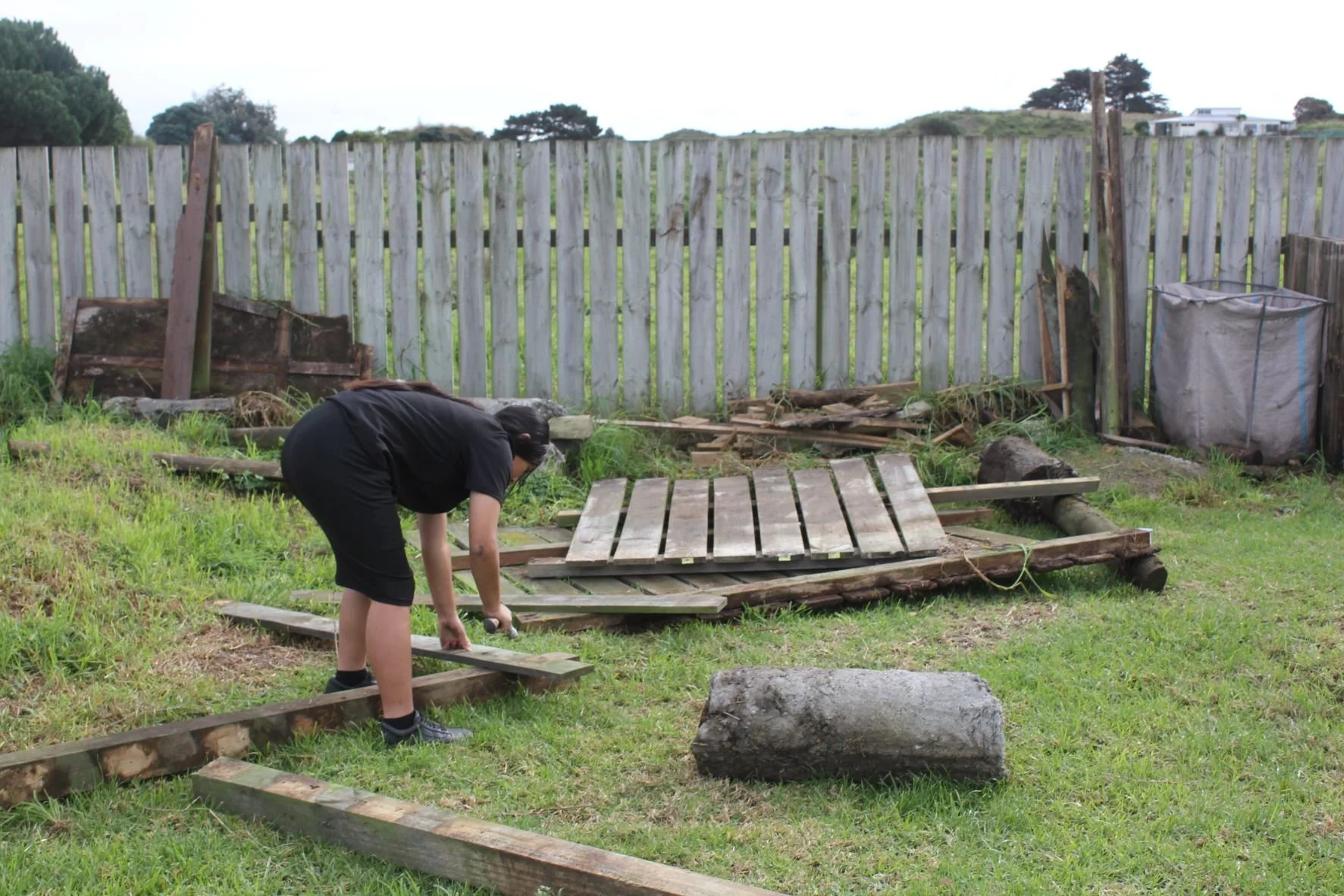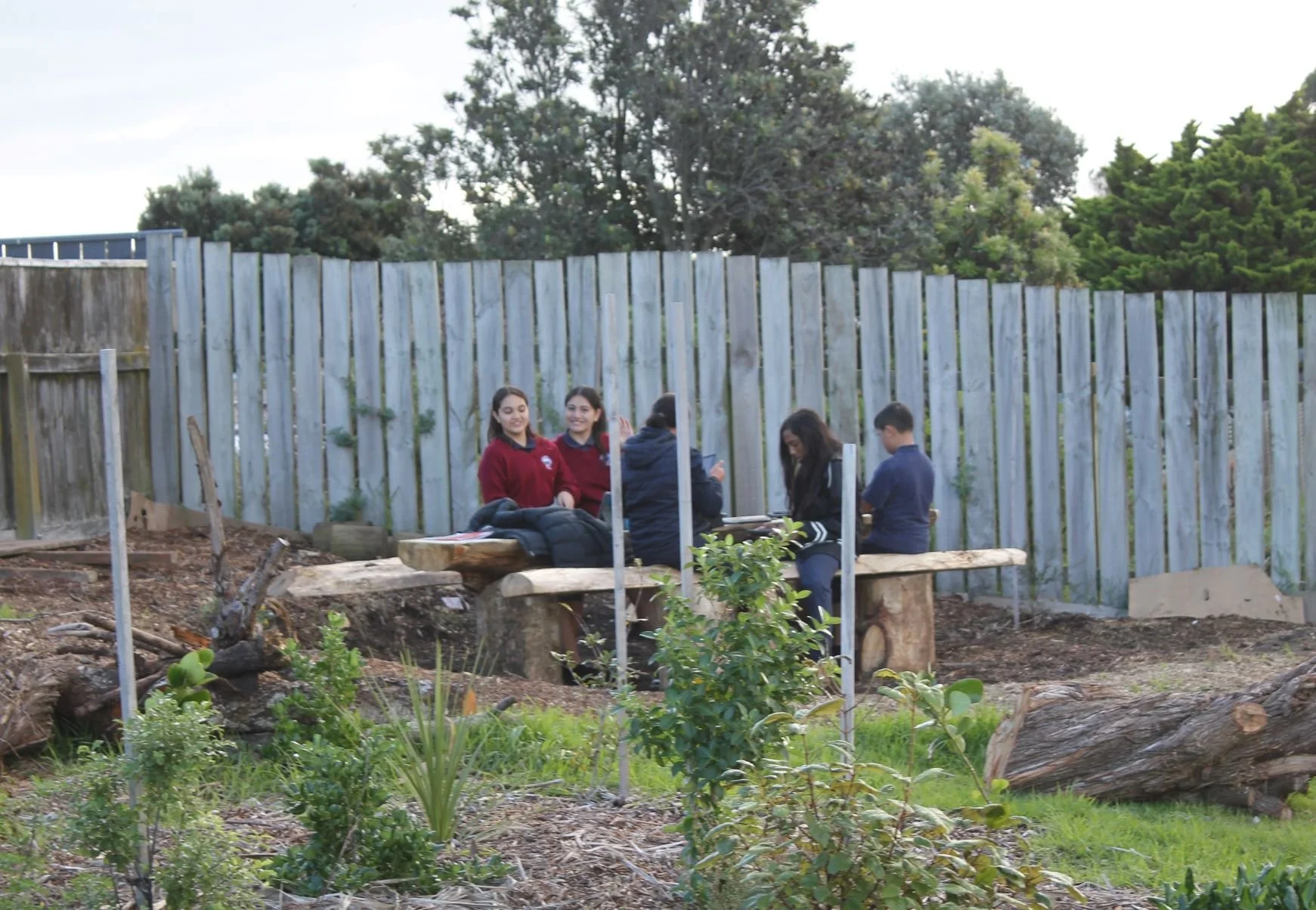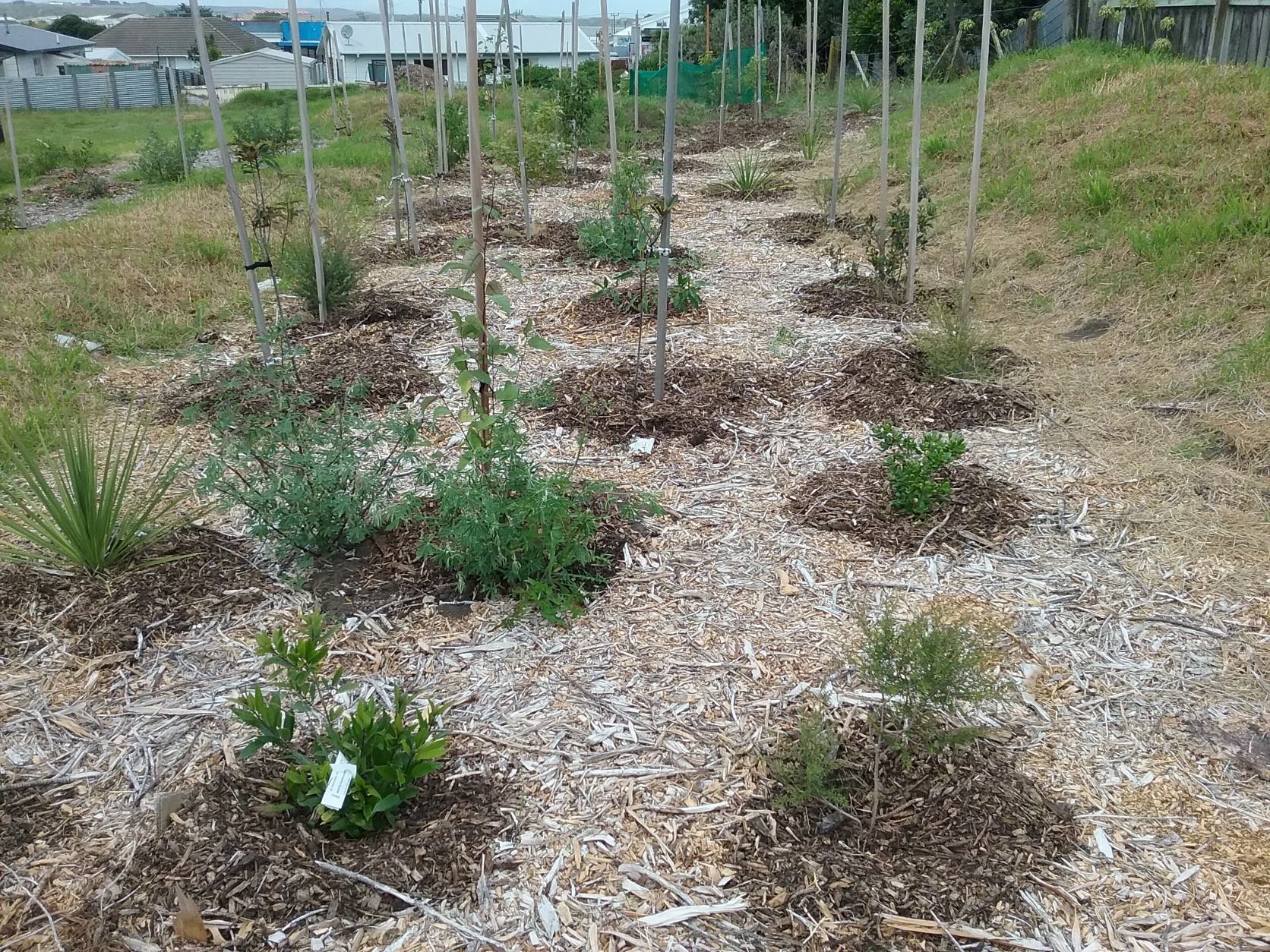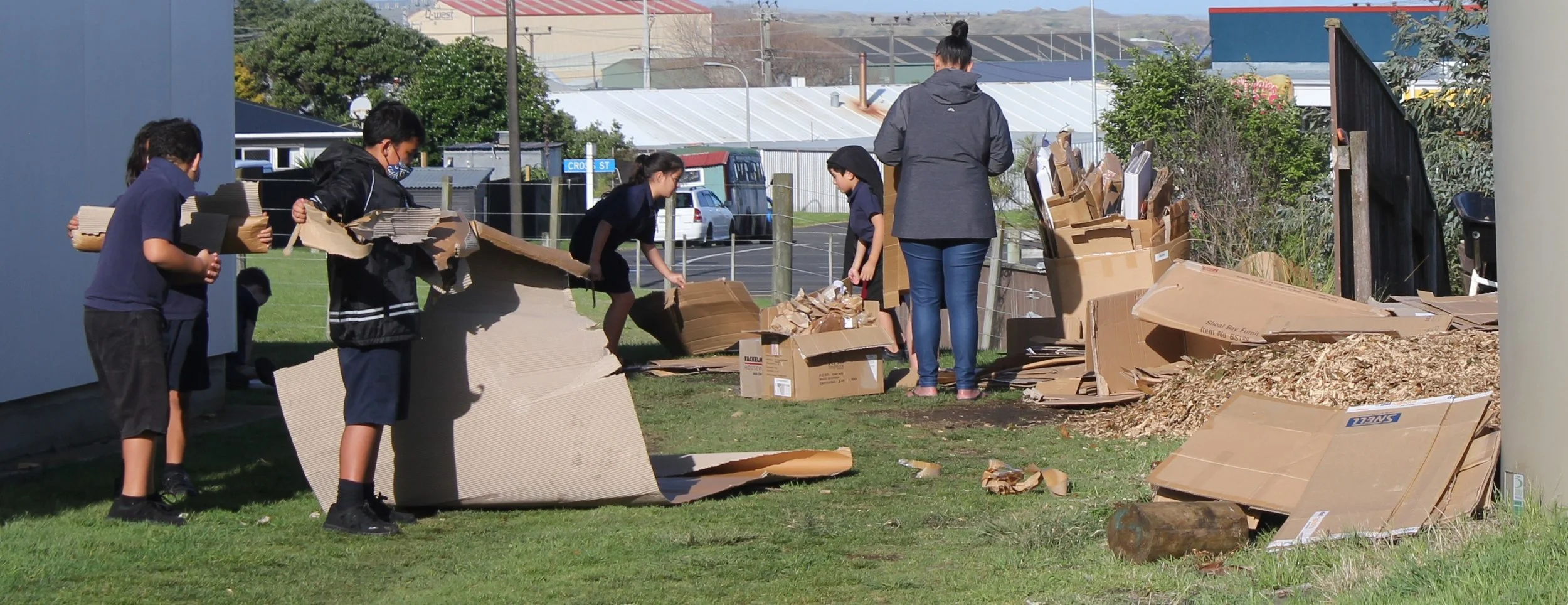Te Pae Maharahara
Te Kura Kaupapa Māori O Tupoho - Castlecliff, Whanganui, New Zealand
Te Pae Maharahara ‘Garden of Remembrance’ is dedicated to all the whānau (family) who established and built the kura (school)
The plaque on the Māuri stone (below) is inscribed with the kōrero “E tu te poho ki to ruku o te Kawau kura” and translates as: “Stand with grace and pay honour to our noble loved ones”. This kōrero was given by distinguished Ngā Rauru Reo speaker Rauru Broughton, who also named Te Pae Maharahara. This garden is a healing and learning space for students and whānau.
Thank you to the generous support of Te Kura Kaupapa Māori O Tupoho Board of Trustees, kaiako, kaimahi, rangatahi, tamariki and whānau and Tumuaki Matua Tim Tukapua for his passion for the tāiao as a learning environment. See article for our project here
Thanks also to the generous funding for the project from:
Matariki Tu Rākau One Billion Trees Project - Ministry of Primary Industries The Indigenous Biodiversity Fund 2021 and 2022 Horizons Regional Council The Ministry Of Education Discretionary Fund 2022.
Thanks to the Heritage Crops Research Trust for their many donations of fruit and nut trees, vegetables and seeds. Thanks to Emma Morris and The Learning Environment, Murray Jones, and the community who gave their time and support to this project. Ngā mihi nui ki a koutou katoa!
Preparation Works
Originally a slope of sand dunes covered in kikuyu grass we cut 3 broad terraces with mounds (or ‘swale’s’) to slow, soak and store rainfall. Cardboard and tree mulch were added to these terraces to build organic matter, hold moisture in the soil, and encourage fungi, micro-organisms and worms. Compost pockets were used when planting to establish and feed trees and plantings. Nitrogen-fixing nurse trees such as Tagasaste (Tree Lucerne) are planted to help establish the more sensitive plantings. Native Rongoā (medicinal) trees are planted on the top terrace, perimeter and gully and provide much-needed habitat to increase local biodiversity. The lower two terraces are planted with a mix of native and fruit and nut trees, underplanted with herbs and edible groundcovers,

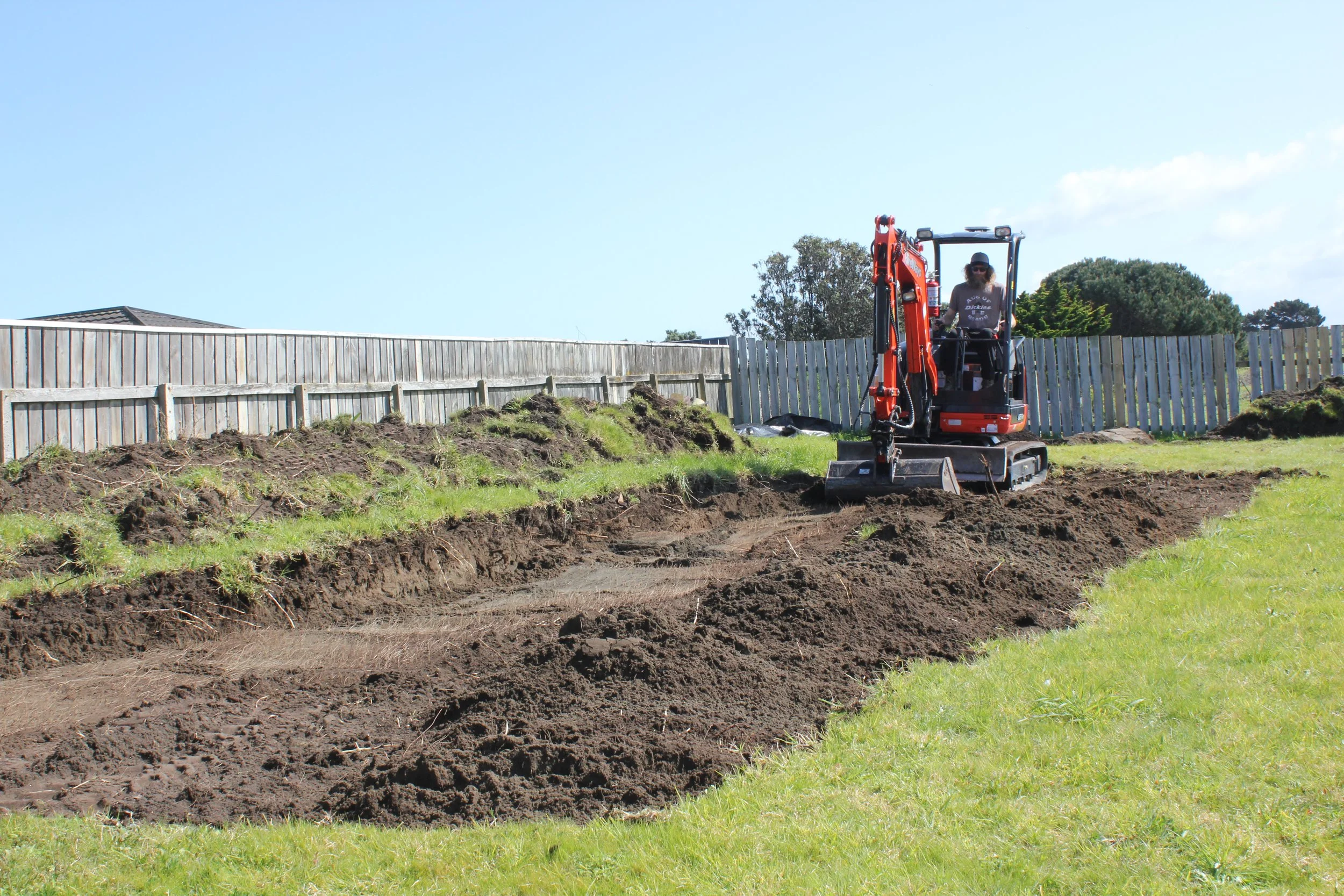

Earthworks by Gareth then an awesome whānau planting day late September 2021 with our first 150 trees planted.
Tino pai oū tātou mahi! Ngā tauira, ngā kaiako, ngā manuhiri.. Ngā mihi nui tātou kātoa!

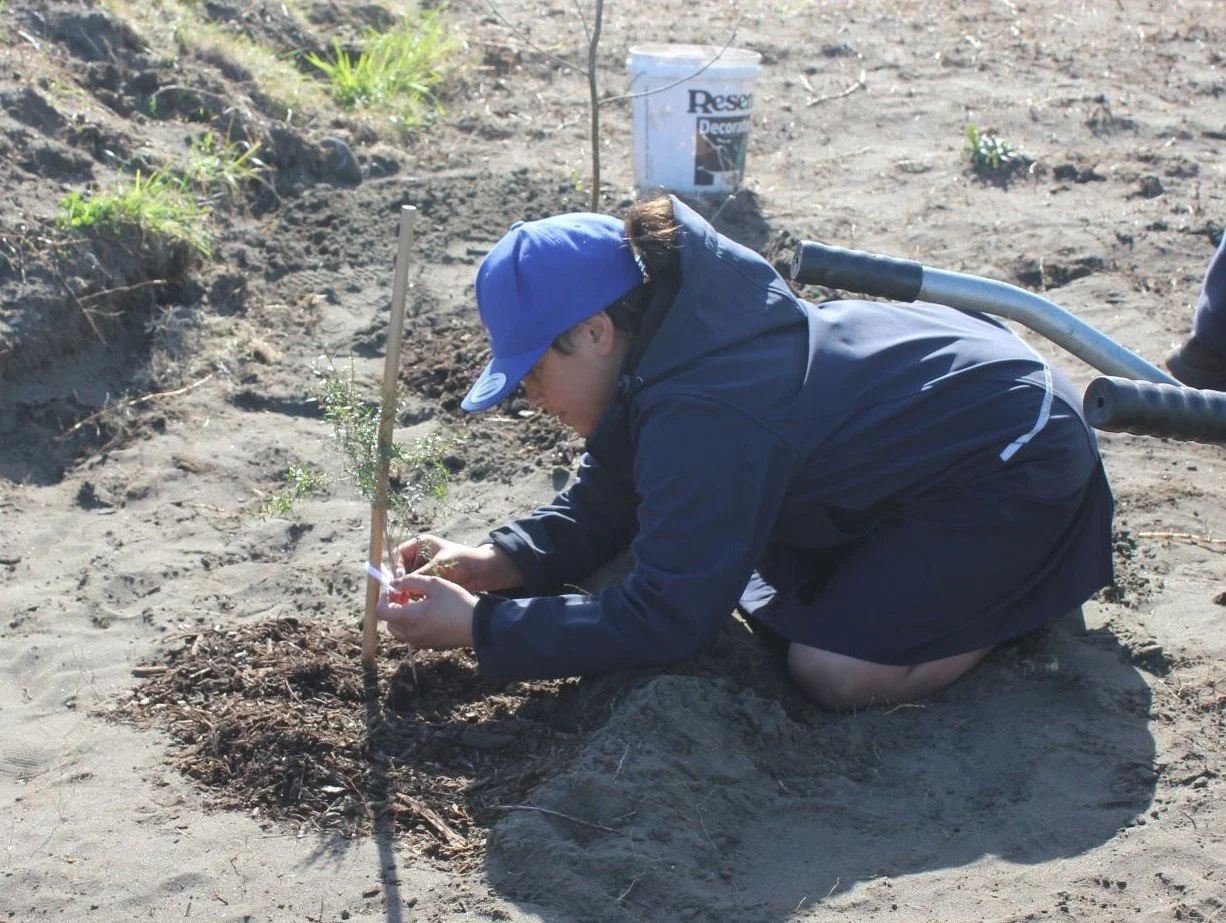


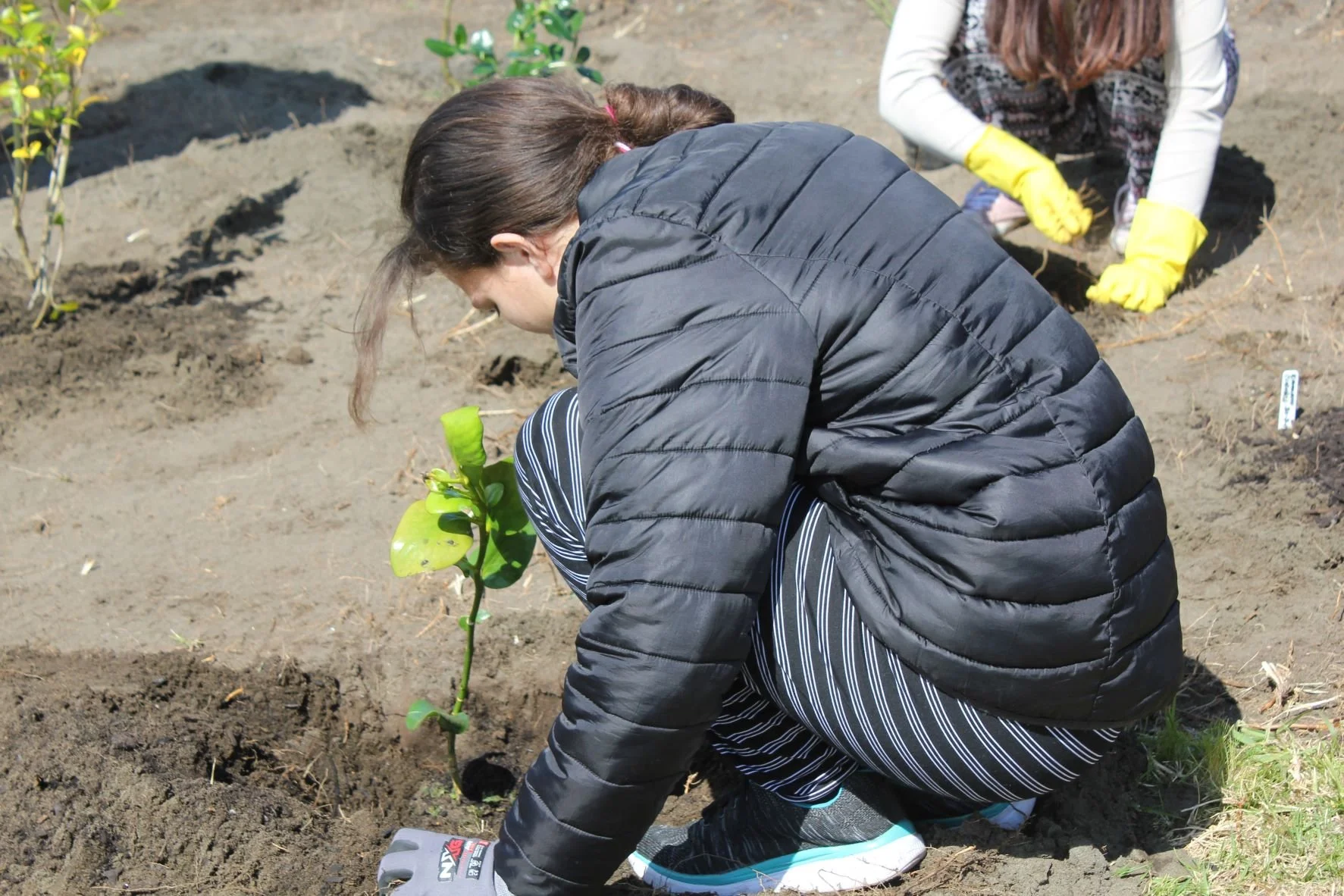

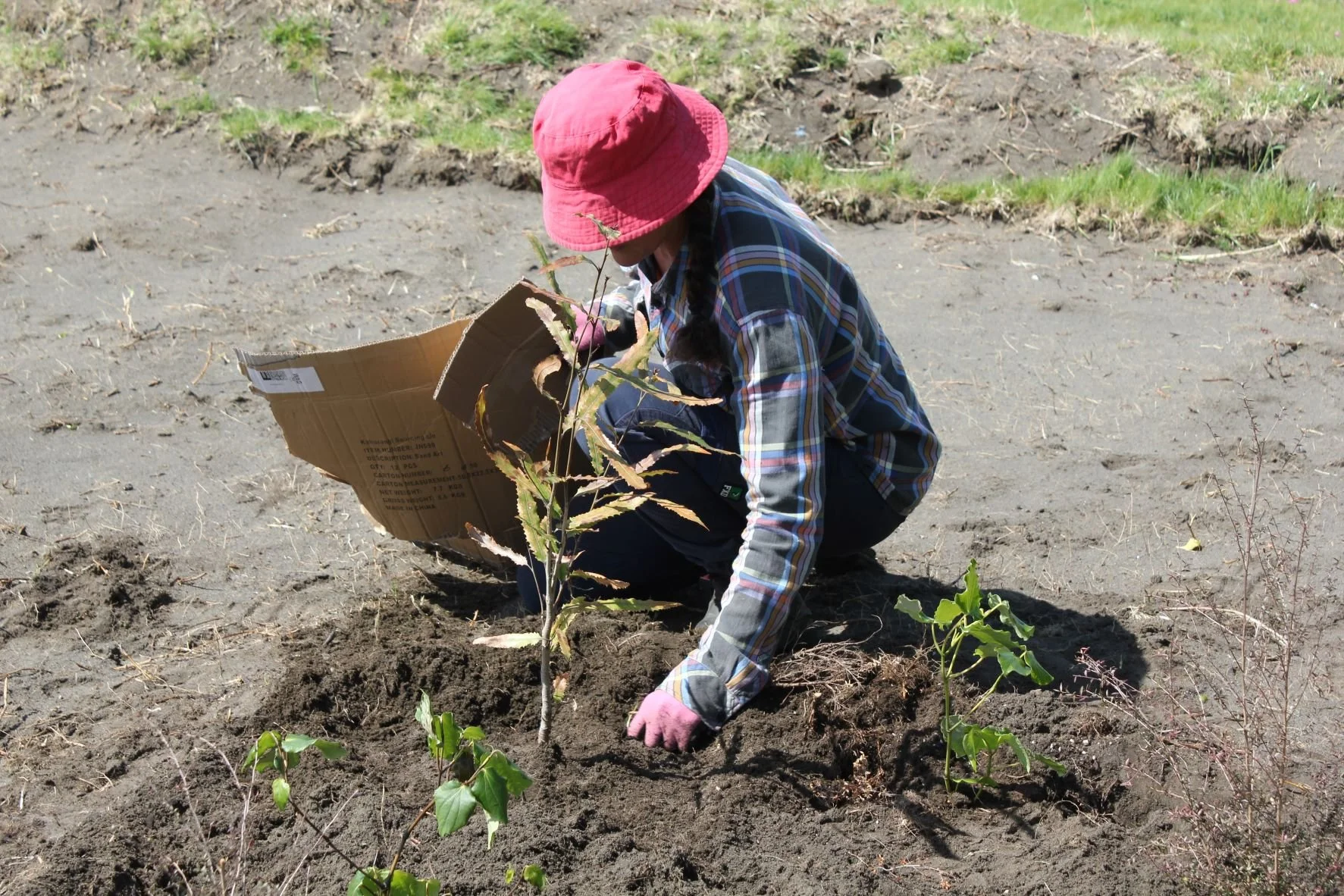
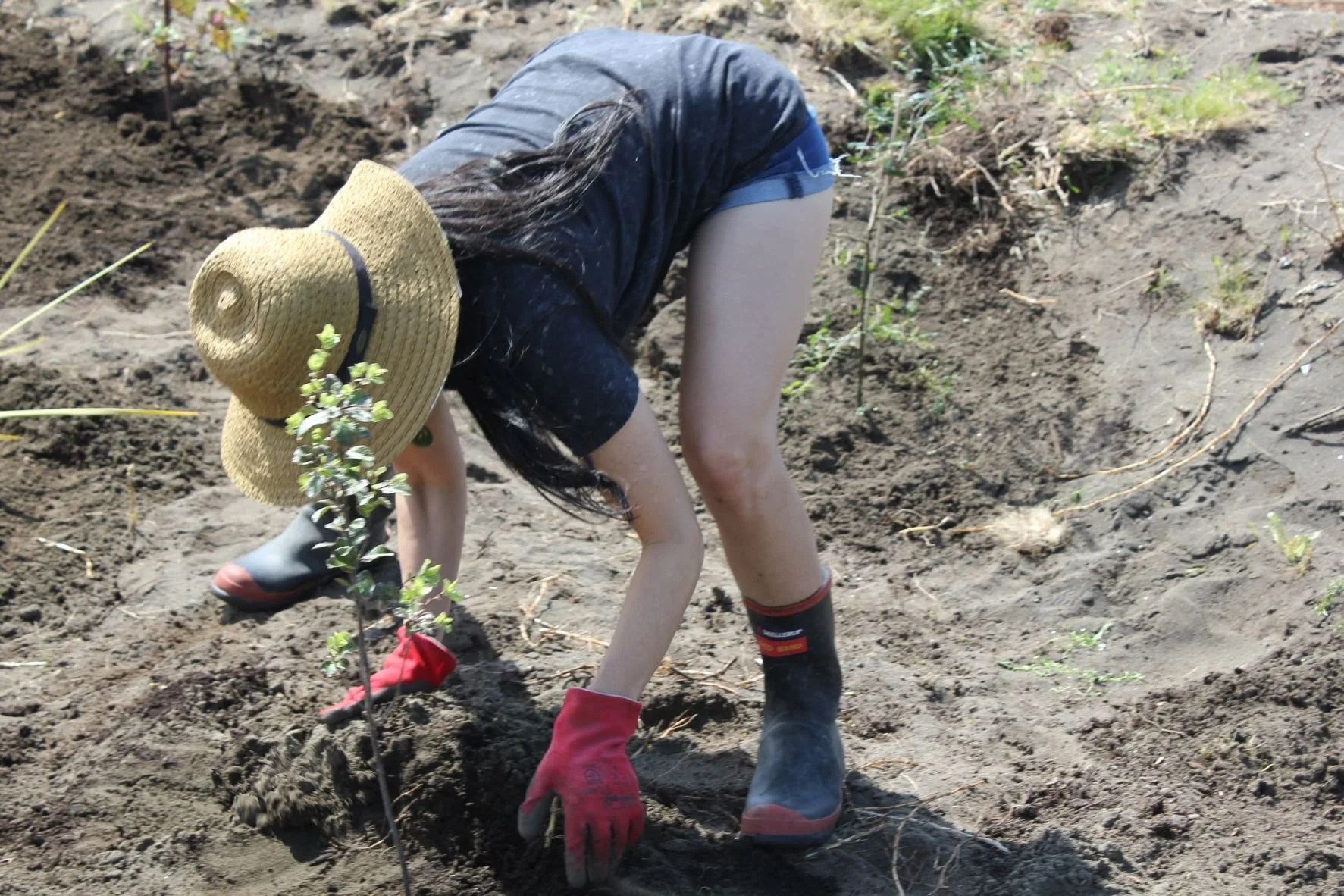
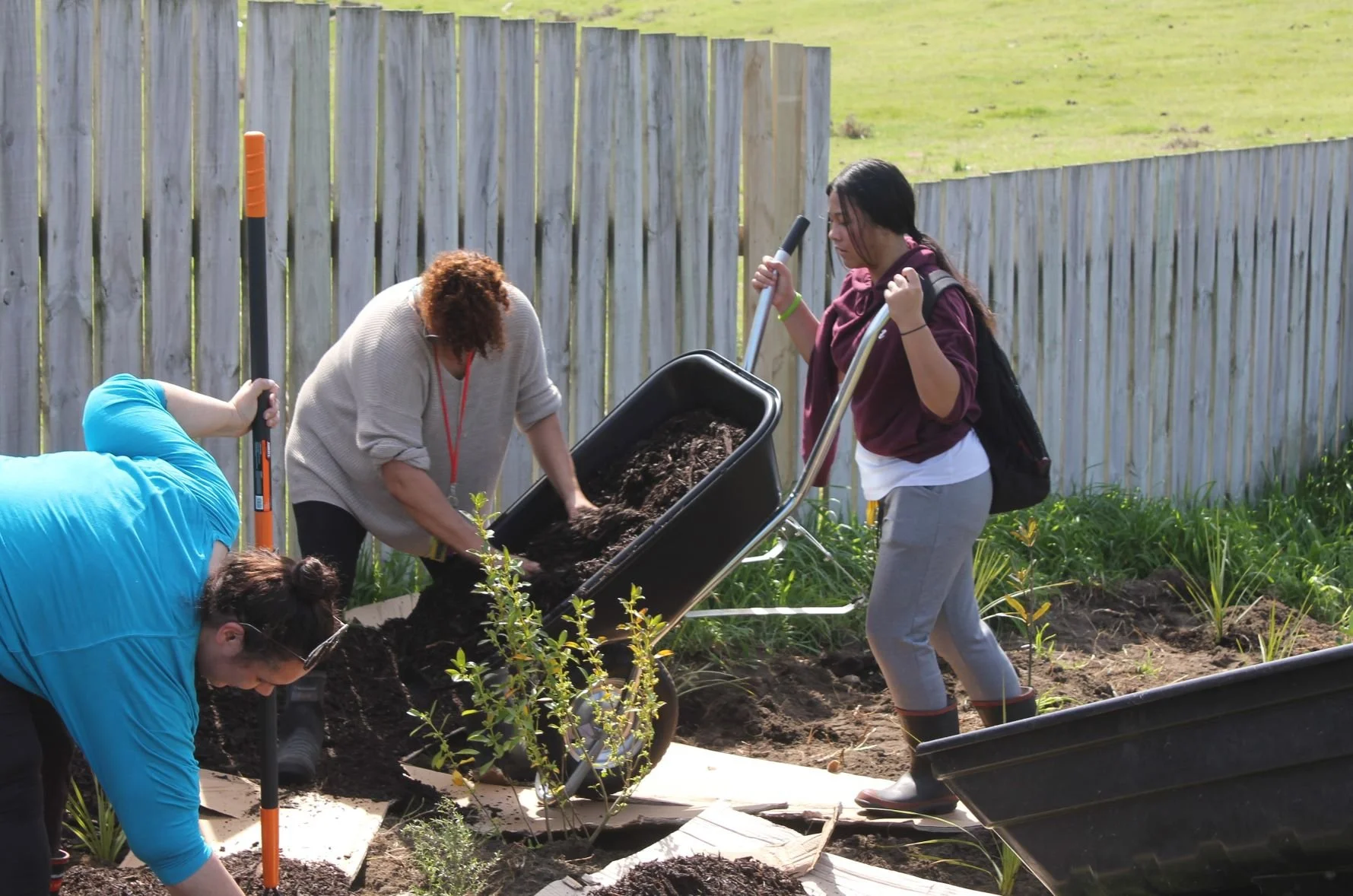
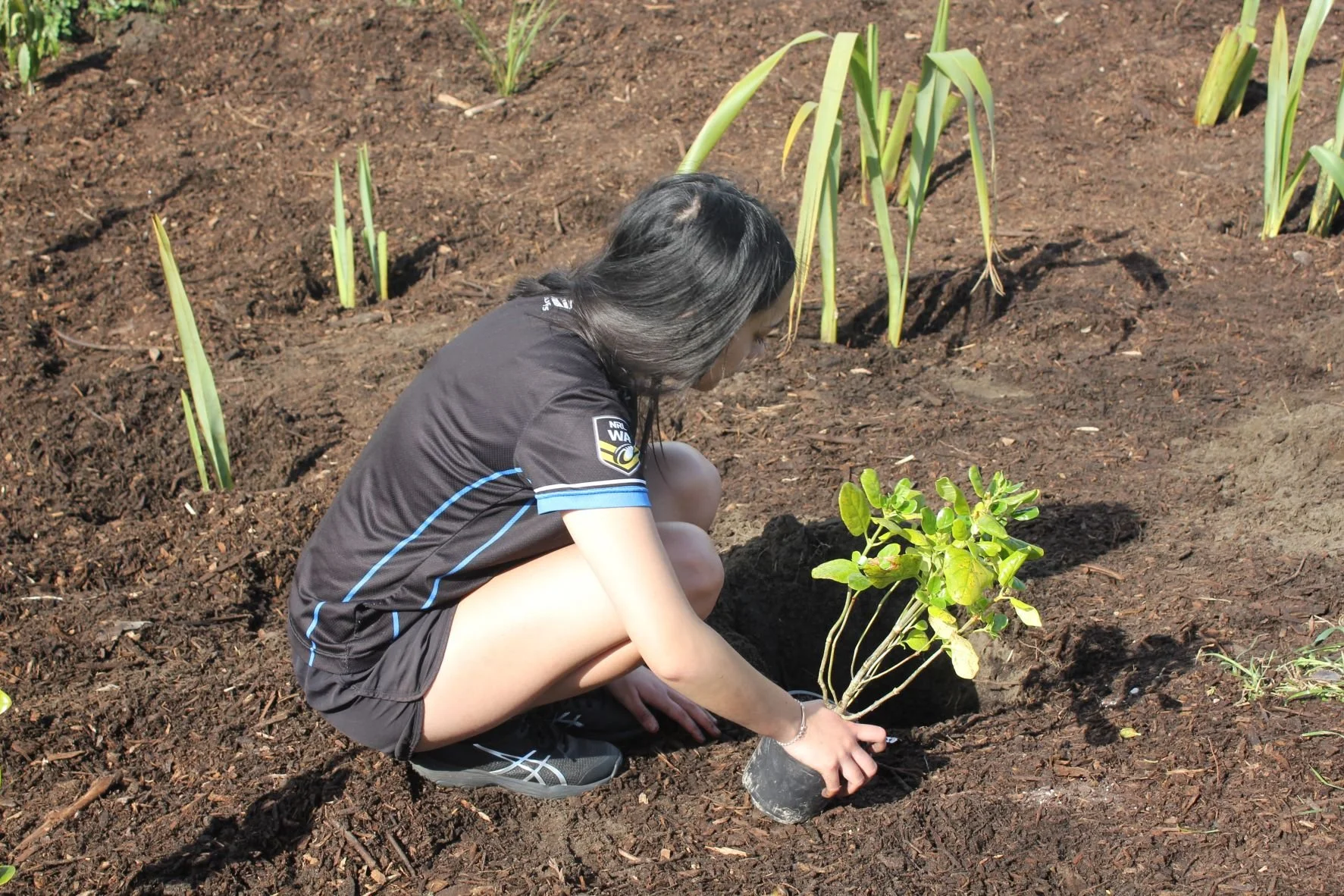
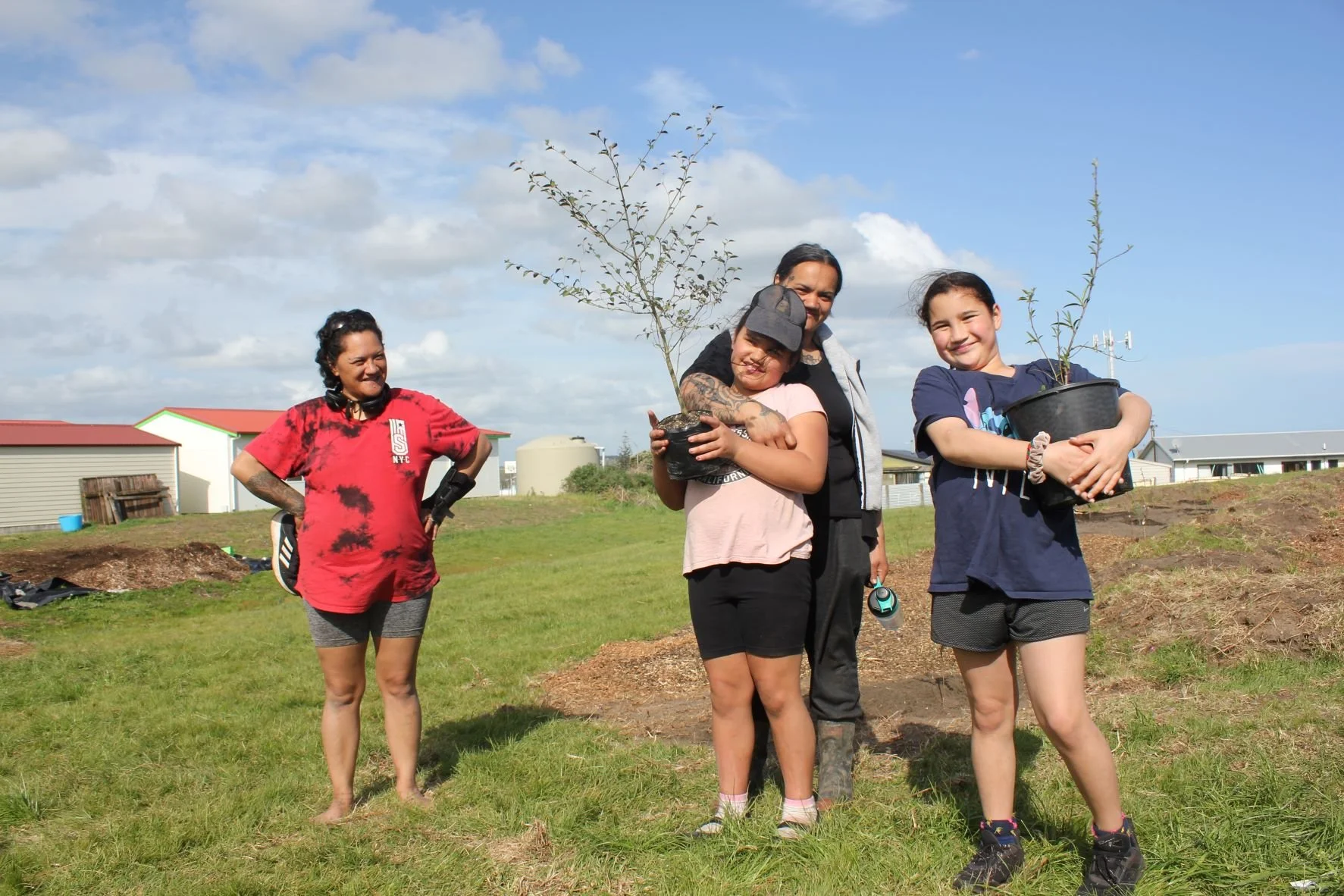
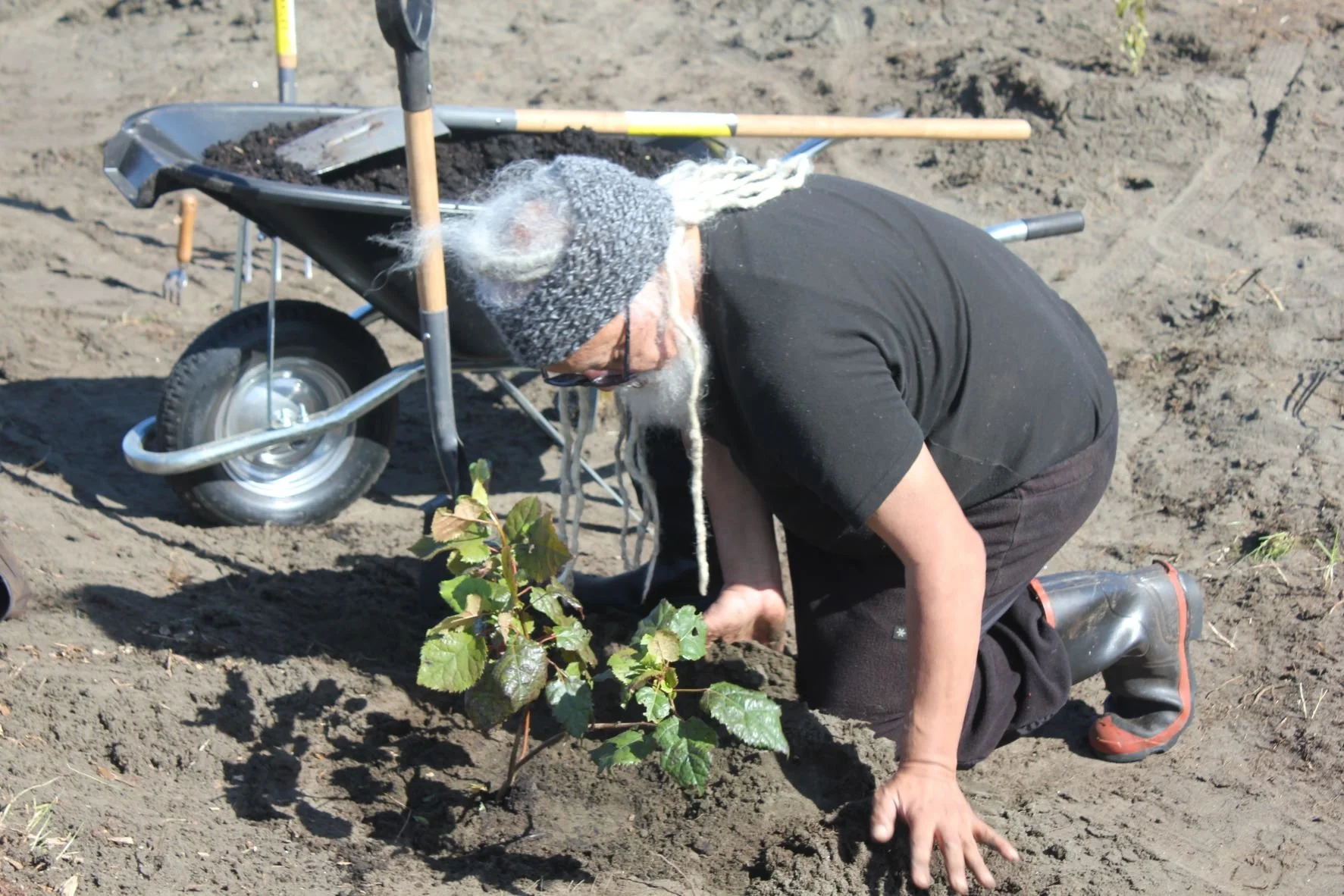
By diverting overflows from two rainwater tanks into the gully we are returning much needed water to the system. Summer months bring high temperatures, winds and therefore evaporation.
Students dug the trench to install a tap from the tank to irrigate the top terraces.

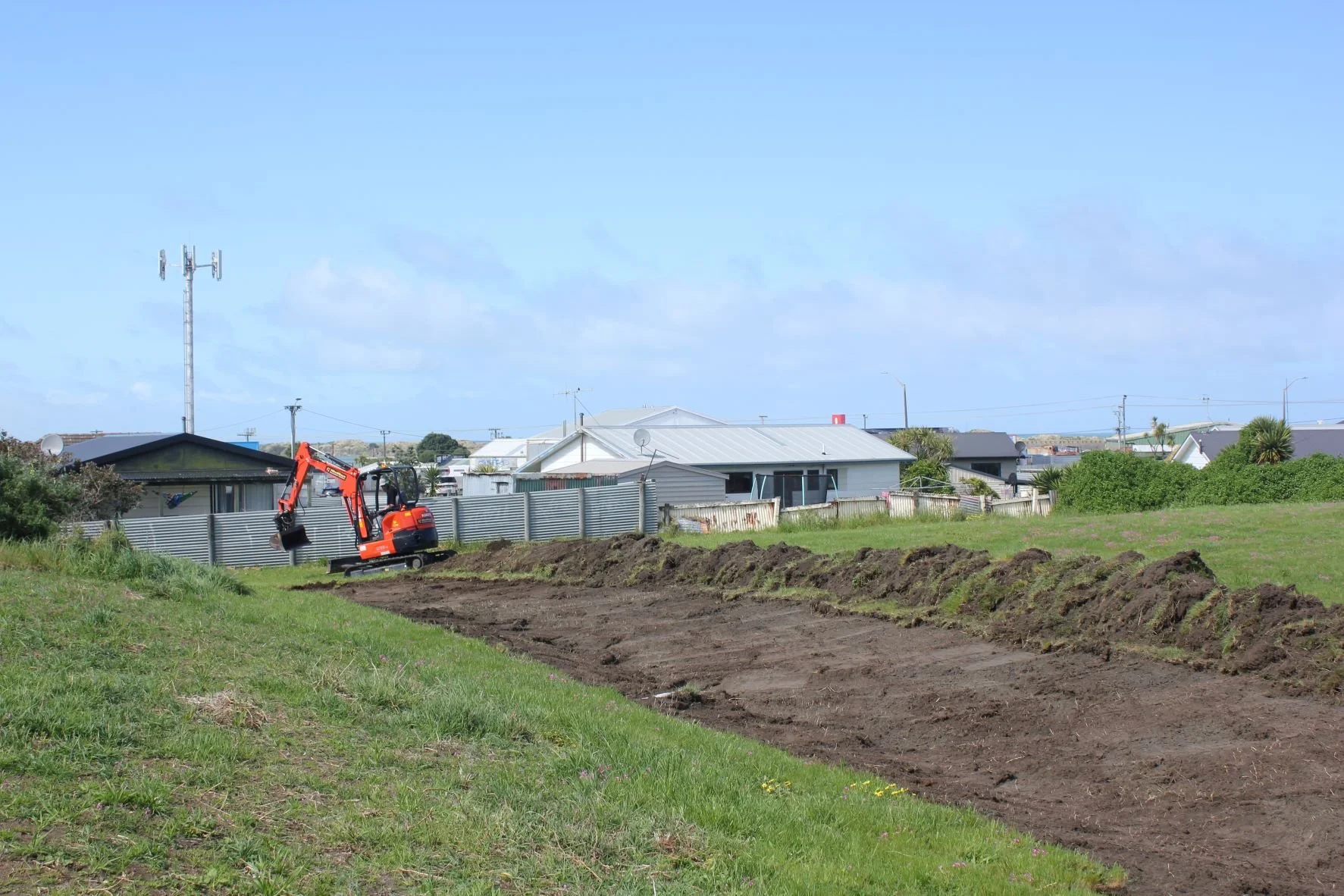
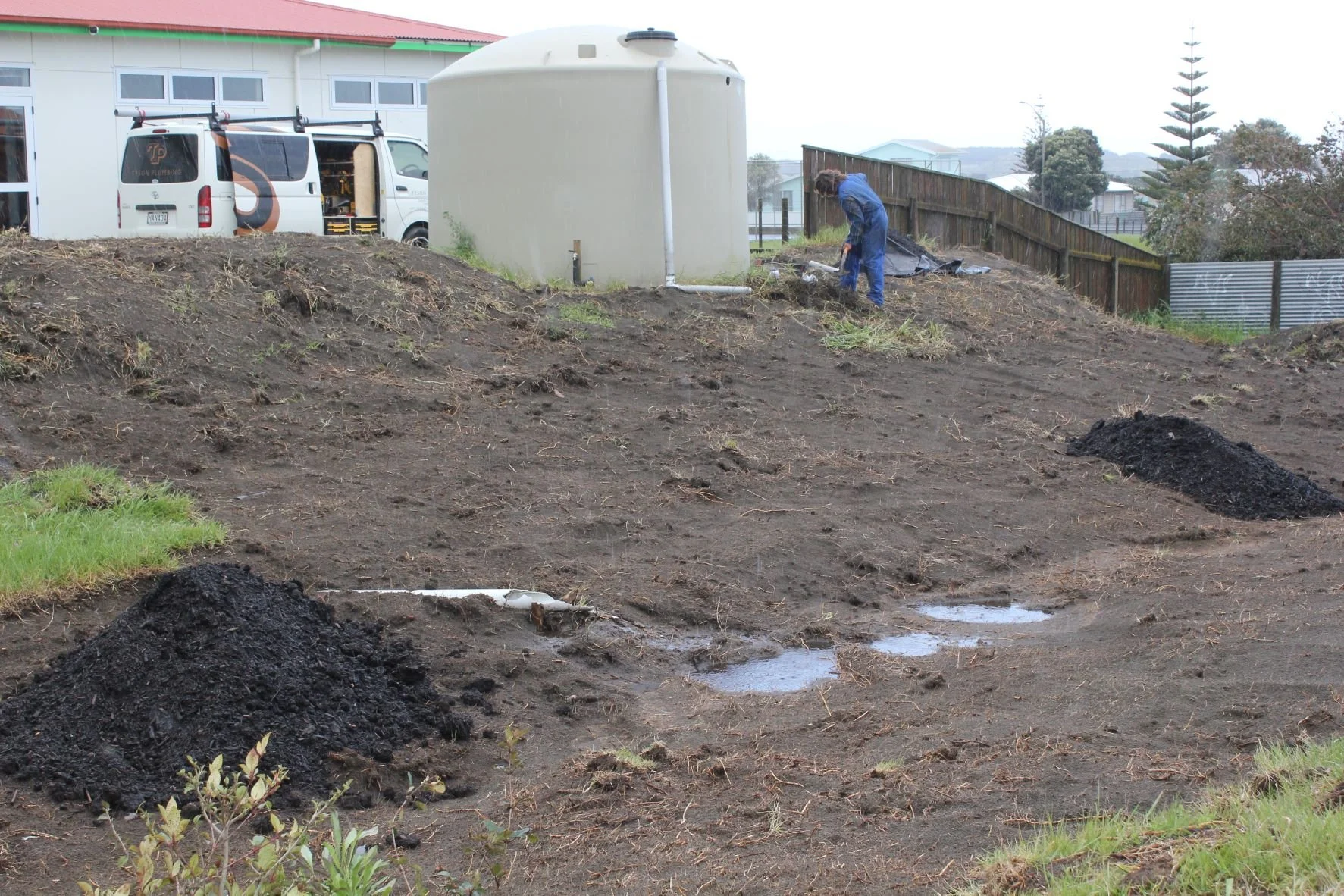

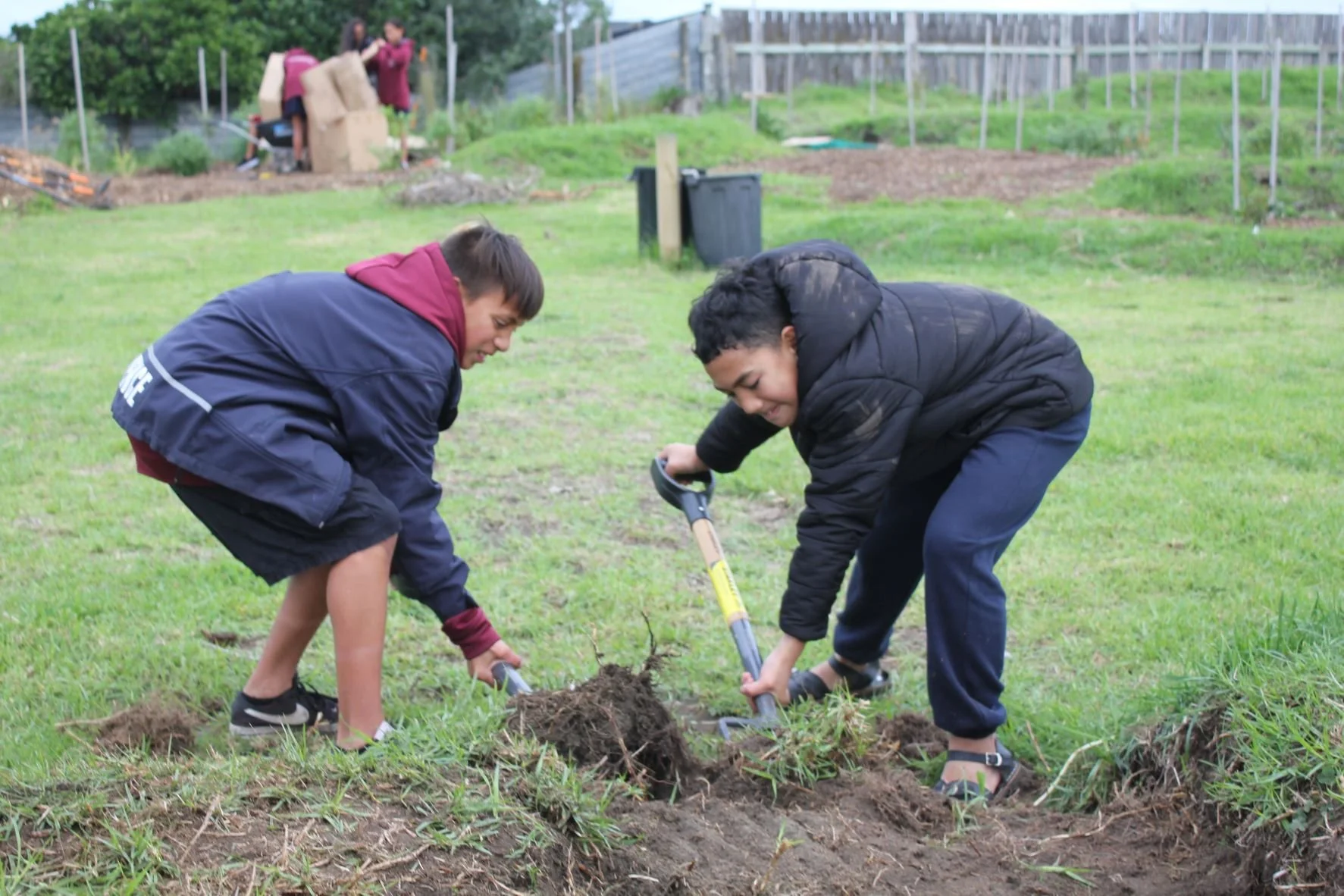



Matariki / Pūanga - The Māori New Year
The Matariki constellation rises in mid winter (locally the Pūanga star is used) and marks the Māori New Year. From this point the days grow longer. Matariki/Pūanga is a time to remember loved ones who have passed in the previous year. A time to come together, celebrate and to plant trees.
At Pūanga 2022 the Mauri stone was installed and the māra given it’s name Te Pae Maharahara with a blessing. Together we planted trees. We worked hard as a team in the weeks before to prepare the ground. Laying cardboard and tree mulch to suppress weeds and build soil. We recycled old fencing to construct seating and turned donated tree trunks and a slab into a beautiful table and seating in a sheltered outdoor learning area.
